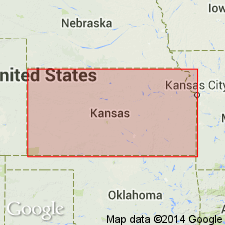
- Usage in publication:
-
- Cimarron series
- Modifications:
-
- Original reference
- Dominant lithology:
-
- Sandstone
- Shale
- Dolomite
- Gypsum
- Clay
- AAPG geologic province:
-
- Sedgwick basin
- Anadarko basin
Summary:
Pg. 18-48. Cimarron series [or Cimarron group]. Upper part (1,100 to 1,250 feet of prevailingly red unfossiliferous rocks) of Permian of Kansas. Overlies, probably unconformably, the Big Blue or limestone-bearing series of Permian and unconformably underlies Cretaceous deposits. Divided into ten formations (descending): Big Basin sandstone, Hackberry shales, Day Creek dolomite, Red Bluff sandstones, Salt Plain measures, and Harper sandstones. Age is Permian.
Named from Cimarron River, central southern KS.
[USGS adopted Cimarron Group for use in its publications (US geologic names lexicon, USGS Bull. 896, p. 444, ca. 1938); term later abandoned (see US geologic names lexicon, USGS Bull. 1200, p. 804).]
Source: US geologic names lexicon (USGS Bull. 896, p. 444); GNC KS-NE Permian Corr. Chart, Oct. 1936.
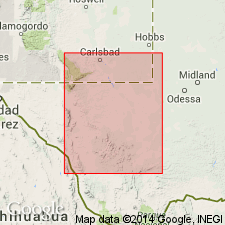
- Usage in publication:
-
- Cimarron series
- Modifications:
-
- Not used
Summary:
Pg. 1677, 1678. Cimarron series of northern Midcontinent region should be abandoned and its constituent strata reclassified as belonging to Leonard series and Guadalupe series.
Source: US geologic names lexicon (USGS Bull. 1200, p. 804).
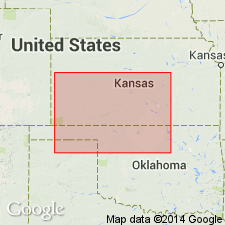
- Usage in publication:
-
- Cimarron series
- Modifications:
-
- Areal extent
- AAPG geologic province:
-
- Anadarko basin
- Sedgwick basin
Summary:
Pg. 1764 (fig. 3), 1766-1814. Cimarron series. Succeeding Milan limestone, top member of Wellington formation, without a break, are red shales and sandstones and higher evaporite beds of Kansas which constitute Cimarron series, which includes all succeeding Permian redbeds of the State, divided by Cragin (1896) into Salt Fork and Kiger divisions. Series comprised (ascending) Ninnescah shale, Stone Corral dolomite, Nippewalla group (new, which includes Harper sandstone redefined, Salt Plain formation, Cedar Hills sandstone, and Flowerpot [Flower-pot] shale), Blaine formation, Whitehorse formation, Day Creek dolomite, and Big Basin formation. Overlies Big Blue series.
Source: US geologic names lexicon (USGS Bull. 1200, p. 804).
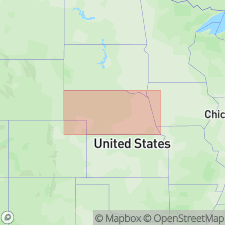
- Usage in publication:
-
- Cimarron series
- Modifications:
-
- Areal extent
Summary:
Pg. 24-30. Cimarron series. Formations of Cimarron series are well developed in northern Oklahoma and southern Kansas from which some of them extend [in] subsurface to southern and western Nebraska and grade into Permian redbed section of Rocky Mountain, Laramie Range, Hartville, and Black Hills regions. Correlations discussed.
Source: US geologic names lexicon (USGS Bull. 1200, p. 804).
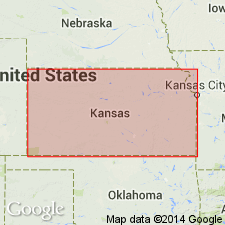
- Usage in publication:
-
- Cimarron Stage
- Modifications:
-
- Overview
Summary:
Chart. Cimarron Stage of Kansas includes (descending) Nippewalla and Sumner Groups. Top stage in Lower Permian Series, above Gearyan Stage (Lower Permian Series), and below Custerian Stage (Upper Permian Series).
[GNC remark (ca. 2010): Cimarron Stage replaced with Leonardian Series (see Savin and others, 2008, Kansas Geol. Survey Bull., no. 254, pt. 2; available online http://www.kgs.ku.edu/Current/2008/Sawin/index.html).]
Source: Publication.
For more information, please contact Nancy Stamm, Geologic Names Committee Secretary.
Asterisk (*) indicates published by U.S. Geological Survey authors.
"No current usage" (†) implies that a name has been abandoned or has fallen into disuse. Former usage and, if known, replacement name given in parentheses ( ).
Slash (/) indicates name conflicts with nomenclatural guidelines (CSN, 1933; ACSN, 1961, 1970; NACSN, 1983, 2005, 2021). May be explained within brackets ([ ]).

